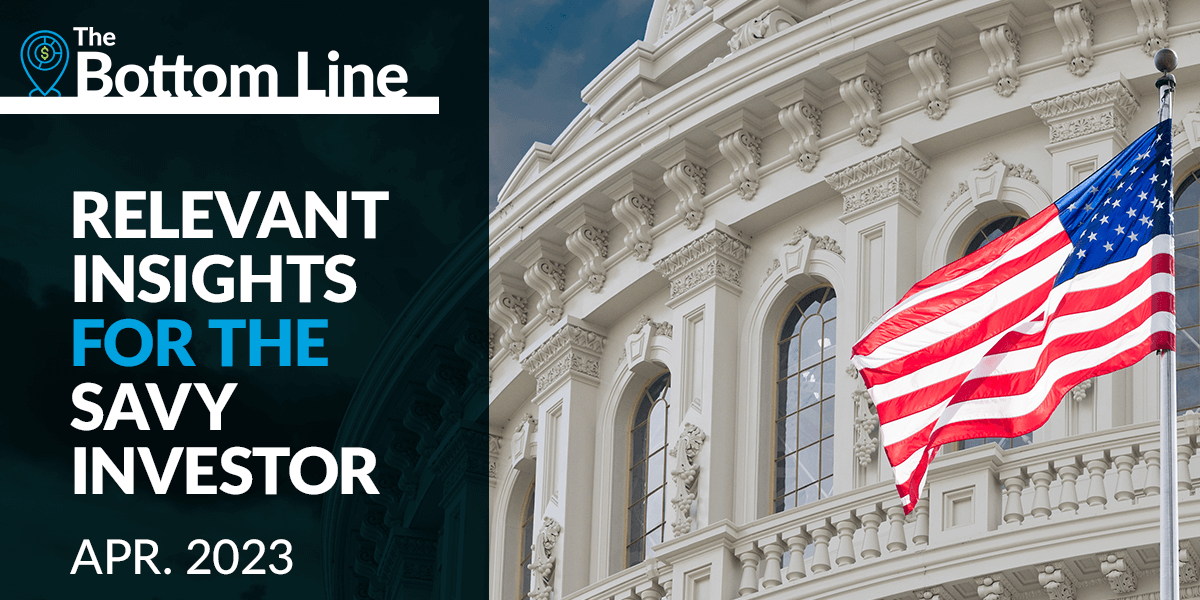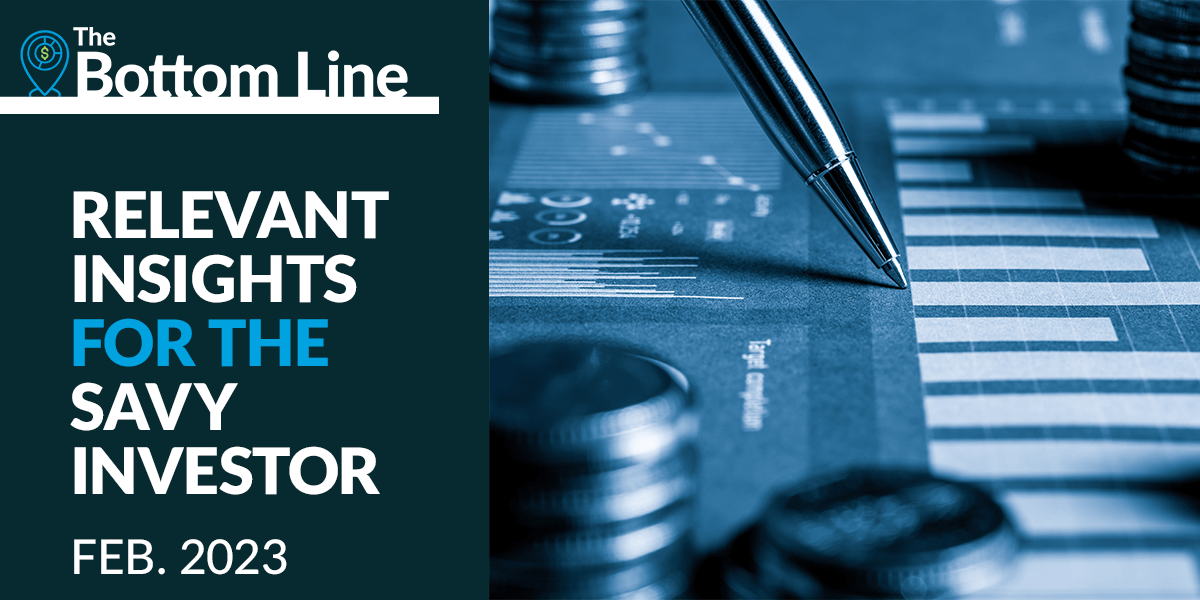

A Slowdown in the Pace of Raising Rates, Not a Pivot
In regards to monetary policy, the Federal Reserve Bank appears to be in a transition phase. This week, at its final meeting of the year, the Fed raised the federal funds rate by 50 basis points. This is a step down from its unprecedented series of 75 basis point hikes at each of the past four meetings. A slowdown in the pace of rate increases is needed because the Fed wants more time to see how past increases have impacted the economy.
This is not the much ballyhooed “pivot” by the Fed. The Fed is not turning dovish and has no plans to soon ease monetary policy. In fact, Fed Chair Powell has spoken in the past few weeks and has reiterated that the Fed has a long way to go to bring inflation under control. Instead, the Fed is just merely slowing down the pace of Fed tightening. Economists often use automotive analogies to describe Fed actions. In this case, the Fed is just slowing the speed of the car from 75 mph to 50 mph, but it is still proceeding forward. Furthermore, the Fed has increased its previous forecasted peak in the federal funds rate (4.6%) to a higher level (5.1%). This means the exit ramp for the Fed will be pushed further down the highway.
The slower pace of raising interest rates buys the Fed time. They want more time to see how the economy as responded to the hikes so far. It takes time for the full effects of those rate increases to ripple through the economy. Some parts of the economy that are sensitive to interest rates, like home sales, are responding to the highest level of mortgage rates in around 20 years (chart 1) and sales are slowing (chart 2).


Others, like vehicle sales, continue to increase (chart 3) despite the highest financing costs in about a decade (chart 4). This is due to pent-up demand from the lack of new vehicles for sale in the past few years due to supply chain issues in manufacturing, most notably the shortage of semi-conductor chips. Even with the recent increase in sales, they are well below the average level from before the pandemic (chart 3).


The Fed’s goal is a soft landing for the economy. They want to raise interest rates just enough to soften the job market, which would lead to slower wage growth, helping to lower inflation, which should allow the positive growth of the economy to continue. But that is not an easy task. The Fed does not want to overtighten. Because that would mean they would have to cut interest rates soon. Instead, the Fed needs the time to figure out and adjust interest rates to find the “Goldilocks” level to help ensure a continuation of economic growth without a recession.
MARKET TRENDS
Fueled by signs of moderating inflation and growing expectations for an easing in the pace of Fed tightening, the latest equity market rally has gained steam with the S&P 500 recording its first back-to-back monthly gains in over a year. While we agree that recent developments are encouraging, it’s important to remember that rallies are common features of bear markets, and history suggests the path to a Fed pivot could be volatile for stocks due to elevated inflation and interest rate risk.
LABOR
Demand for workers is slowing, but wage pressures remain around 5.0% y-o-y, about 2 percentage points above what the Fed wants.1
THE FED
The Fed has reduced the size of increases in the funds rate, but at the same time, it has set a higher terminal rate 5.1%.2
HOUSING
Following the significant weakness in the home sales market, mortgage rates have fallen more than 50 bps after peaking at 7.35% in early November.3
TRADE DEFICIT
After reaching a record peak in March, the deficit started to decline, but the strong dollar has derailed that trend in the past two months due to higher export prices.4
INFLATION
For the second month in a row, inflationary pressures have declined significantly, and a long disinflationary trend appears to be underway.5
ENERGY
Energy prices continue to decline as fears of the global recession continue to grow, primarily based on China’s ongoing problems with COVID-19.6
Sources
1. Bureau of Labor Statistics
2. The Federal Reserve
3. Bankrate.com, Commerce Department
4. Department of Commerce
5. Bureau of Labor Statistics
6. Energy Information Administration, Wall Street Journal
Index Definitions
CPI: The Consumer Price Index (CPI) is a measure that e xamines the weighted average of prices of a bask et of consumer goods and services, such as transportation, food and medical care.
Important Disclosures
The information presented does not involve the rendering of personalized investment, financial, legal, or tax advice. This presentation is not an offer to buy or sell, or a solicitation of any offer to buy or sell any of the securities mentioned herein.
Certain statements contained herein may constitute projections, forecasts and other forward-looking statements, which do not reflect actual results and are based primarily upon a hypothetical set of assumptions applied to certain historical financial information. Readers are cautioned that such forward-looking statements are not a guarantee of future results, involve risks and uncertainties, and actual results may differ materially from those statement. Certain information has been provided by third-party sources and, although believed to be reliable, it has not been independently verified and its accuracy or completeness cannot be guaranteed.
Past performance or performance based upon assumptions is no guarantee of future results.
Indices are unmanaged and one cannot invest directly in an index. Index returns do not reflect a deduction for fees or expenses.
Any opinions, projections, forecasts, and forward-looking statements presented herein are valid as on the date of this document and are subject to change. All investing is subject to risk, including the possible loss of the money you invest. As with any investment strategy, there is no guarantee that investment objectives will be met and investors may lose money. Diversification does not ensure a profit or protect against a loss in a declining market. Past performance is no guarantee of future performance.
This material is available to advisory and sub-advised clients, as well as financial professionals working with City National Rochdale, a registered investment adviser and a wholly-owned subsidiary of City National Bank. City National Bank provides investment management services through its sub-advisory relationship with City National Rochdale.
Investing in international markets carries risks, such as currency fluctuation, regulatory risks, and economic and polit-ical instability.
Investing involves risk, including the loss of principal.
As with any investment strategy, there is no guarantee that investment objectives will be met, and investors may lose money. Past performance is no guarantee of future performance.
As with any investment strategy, there is no guarantee that investment objectives will be met, and investors may lose money. Past performance is no guarantee of future performance.
Non-deposit investment products are not FDIC insured, are not bank guaranteed, and may lose value.
Stay Informed.
Get our Insights delivered straight to your inbox.
Put our insights to work for you.
If you have a client with more than $1 million in investable assets and want to find out about the benefits of our intelligently personalized portfolio management, speak with an investment consultant near you today.
If you’re a high-net-worth client who's interested in adding an experienced investment manager to your financial team, learn more about working with us here.



